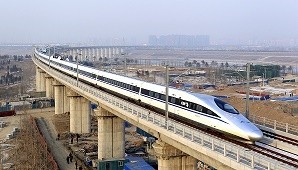The rapid growth and development of China’s high-speed rail network has made it more convenient and affordable for tourists to travel around the country, the China Daily reported.
Based on government data, China has increased construction of high-speed rail from 11,000 kilometers at the end of 2013 to more than 16,000 kilometers at the end of 2014. The Beijing-Shanghai high-speed rail made more than 100 million trips last year and gained profit for the first time since its launch in 2011.
"Tourists long for a satisfied vacation rather than traditional travel, with higher demands for tours. They want to relieve themselves from pressures by having a convenient tour by high-speed trains," Ma Lan, assistant to the general manager of the tourism department of China International Travel Service Limited Head Office, told Xinhua.
"High-speed rail also boosts excursions on weekends. It's faster than driving, and tourists will have sufficient time to enjoy the destination," Ma added.
According to China Daily, an increasing number of travelers prefer high-speed trains rather than taking airplanes due to the convenience, professional service and punctuality.
Wang Yi, 24, a college graduate from Beijing, said that she rides high-speed trains because the carriages are clean, the seats are more comfortable than those in the economy class on the plane, with more room to stretch out. "You can also use your smartphone on the train," she adds.
Taking a high-speed train is more convenient for people traveling from Beijing to East China areas such as Jiangsu and Zhejiang provinces, and the ticket prices are 50 to 60 percent cheaper, especially during peak season, says Ma.
The report said that travel agencies now offer high-speed rail tour packages, such as tour groups and independent travel. The tour usually start from Beijing and destinations often include Shandong, Tianjin, Henan and Shanxin.
According to Ma, young people and office workers often travel on weekends and take shorter trips than two to three days, while older people prefer longer vacations, and families usually choose tour packages that last from two to six days.
"Tourism source markets and destinations are well connected by high-speed rail and accessible from all directions," says Zhang Hui, vice-president of Beijing Tourism Society.
"It's changing the spatial structure of tourism in China. Some destinations across regions are cooperating with each other. The tourism resources along one railway are often homogenized, so they have to develop innovative tour products to be more competitive, "Zhang added.
"It's a challenge for travel agencies to adapt to the market, and develop two-or three-day itineraries," he says. "The local governments and travel agencies should figure out how to establish proper receptions, consultations and sightseeing systems."



























